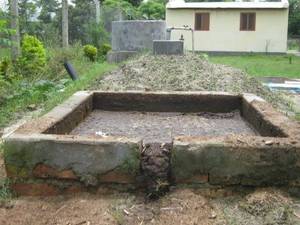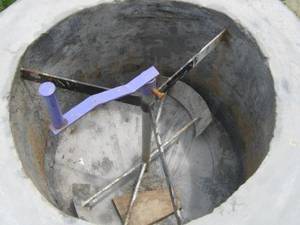Use of Biogas in Nepal
Biogas systems use bacteria to break down wet organic matter like animal dung, human sewage or food waste. This produces biogas, which is a mixture of methane and carbon dioxide, and also a semi-solid residue. The biogas is used as a fuel for cooking, lighting or generating electricity. Using biogas can save the labour of gathering and using wood for cooking, minimize harmful smoke in homes, and cut deforestation and greenhouse gas emissions. Biogas plants can also improve sanitation, and the residue is useful as a fertilizer.
Individual biogas systems are already benefitting several million households in Nepal.
How Biogas works
A simple biogas plant has a container to hold the decomposing organic matter and water (slurry), and another to collect the biogas. There must also be systems to feed in the organic matter (the feedstock), to take the gas to where it will be used, and to remove the residue.
In fixed dome biogas plants (the most common type), the slurry container and gas container are combined, so that the gas collects under a rigid dome over the slurry. As the slurry breaks down, the biogas which is produced pushes some of the slurry into a separate reservoir. When the biogas is taken off, the slurry flows back. However useful and effective it may be but the installation of bio gas is an expencive affaire.
Now that the beneficiaries too have become aware of the double profit five members from each ward were identified and the bio gas was installed. The government also gives concession for the same. The purpose was also that others see the biogas plant and get convinced of its gain and profit.
Experiences in Sirsia
Initinally as a pilot project in order to promote the use of biogas only five
gas plants were installed in the project area. Of course it takes some investment for the installation. Also the family needs to have a minimum number of livestock to produce the needed cow dung to feed the plant. Many families were concerned that they might not be able to cook on days with a shortfall of gas output. Meanwhile a training was organized for firewood cultivation. Traditionally people cook with dried cow dung so they need a replacement for this if it is used for the biogas plant. Some of the beneficiaries are now making use of this knowledge.
The government is promoting installation of biogas plants. Newly, the
subsidy has raised to 40% therefore more farmers are encouraged to go for biogas.


